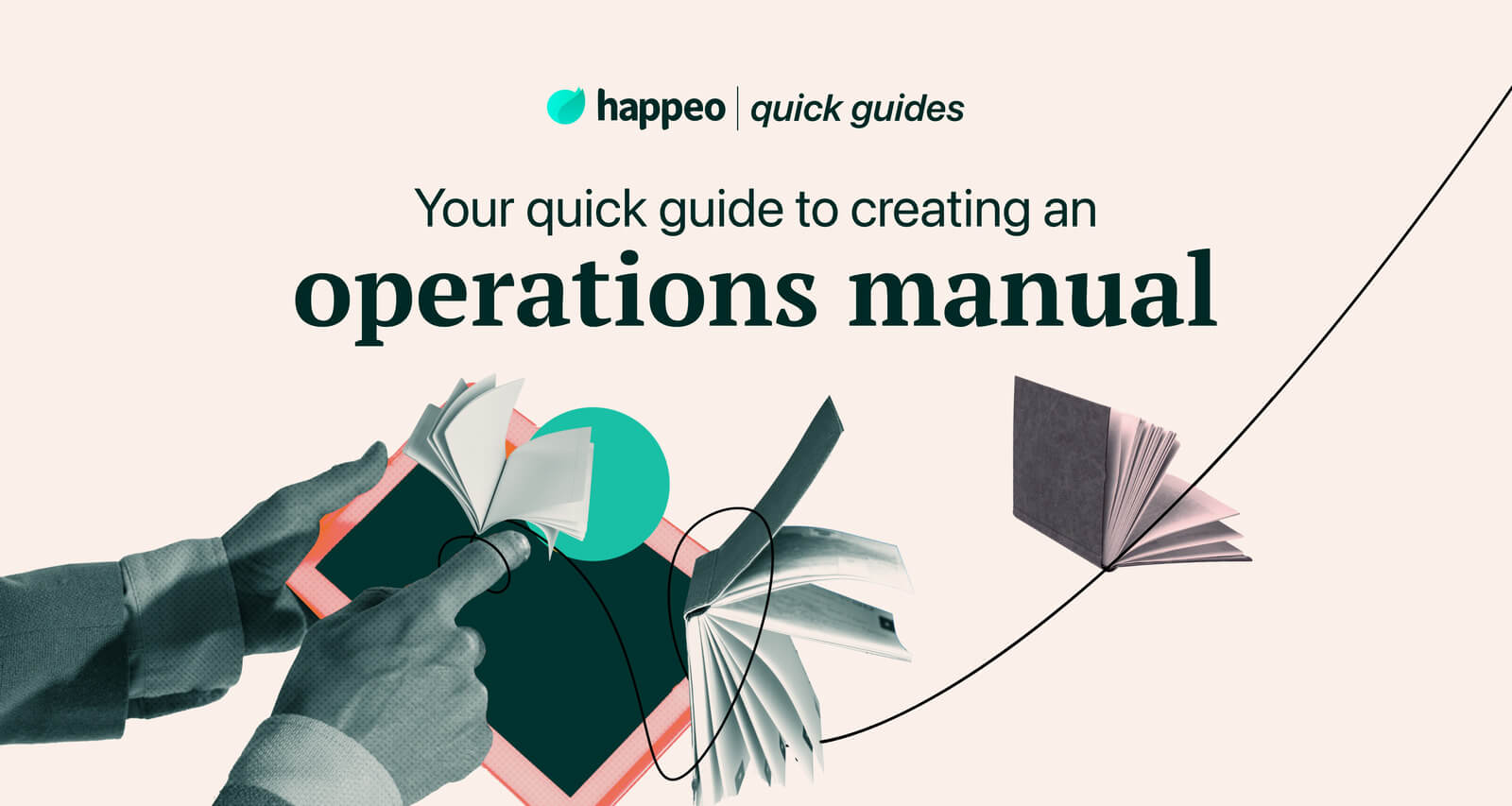
Quick guides Employee engagement
8 useful tips for onboarding remote employees in 2024

8 mins read
Start building your digital home with Happeo
Request a demoQuick guides Employee engagement
Product
Features
Solutions
Happeo for
Use cases
Resources
Explore
Support
Happeo For
Use cases
Comparisons
Explore
Support
Recent

Jonathan Davies
8 mins read
Changing times call for a process revamp. Now you need to adjust to working remotely, and that affects every process in your business, including the onboarding.
In 2020, 42% of the workforce of the USA was working remotely. That switch to remote took us all by surprise, but the time to be surprised is over – it’s time to adapt.
A remote employee is someone who is employed by an organization, but works either full-time or part-time, outside of the traditional office environment. This could mean working from home, a co-working space, or employees may opt to sit with a laptop in a café or at the beach.
Watch video
Remote onboarding is the process of introducing new employees, who will be working remotely rather than from the office, to the organization’s culture, values, rituals, and tools. Remote onboarding is important because organizations build the foundation for the new worker. The goal of onboarding should be to help employees build new relationships and to have a voice in the new workplace.
Good remote onboarding is important – 69% of employees are likely to stay at the job for at least three years if they had a great onboarding. On the other hand, poor onboarding experiences affect employee turnover – about 33% of newcomers start looking for another job already in the first six months and 23% of them don’t make it to the first anniversary. Yes, onboarding new talent in any organization has always been a challenge, and preparing for it has not become any easier.
HR managers have been at the forefront of remote-onboarding processes. It's their responsibility to make sure remote employees have everything they need to be successful in their new role. We gathered some remote onboarding best practices and thought it’d be great to share what we found out, so stick around for some helpful remote work tools and useful tips on how to make your remote onboarding nicer, more efficient, and fruitful in the long run.
First impressions matter. With onboarding, they build a general image of your organization and set a level of employee engagement. You want to make sure that newcomers feel that they made the right choice with your company. Show them you’re happy to have them onboard. Make their first day memorable by giving a warm welcome. Start with organizing a virtual coffee break for your newcomer. Order a lunch delivery. Go the extra mile and send a package with brand merchandise. Creativity is boundless, and yet, it’s the only limitation you’re facing. Some appreciation doesn’t sound too bad, does it?
The online onboarding academy is a digitally-developed program explaining the inner machinery of the organization, its culture, practices, and tools that the new employee should know.
Remote onboarding should not only aim to inform but to create a real communication process between the organization and the incoming talent. Your new people can’t make their job an integral part of their life without creating a genuine and mutual exchange. An online onboarding academy is a great way to establish that.
Thinkific is an example for an online course platform where you can create your online onboarding academy, inform and present a general outlook of who you are, what you are aiming for, and why. This can always include some quick quizzes. Make sure to include remote-specific information in the academy, and if needed, a training section on accessing all technology tools needed for the job. Find what’s right for you, and you can easily outline your online course. This is a great way to set an easy structure that simplifies the learning process and gives a good overview of what the onboardee will need to disseminate. Onboarding is all about learning, and it seems like newcomers also see it that way – 94% of them would stay longer with an organization if it invests in their learning.
Slides, videos, all and every content you can think about can be a plus. Just be sure to present the new remote worker with what they want and what they need. Introducing the employees in your organization with a personalized introduction helps to create a personal connection right at the start. Next time you know who’s who during the first meetings.
Speaking of meetings, scheduling meetings with key people in different departments is crucial to better understand the inner machinery of the organization. A quick call with people working in different departments gives a more holistic overview and enables work with perspective from the very beginning. Those details get noticed: 72% of newcomers consider one-on-one meetings with their direct manager as the most valuable part of their onboarding.
If your company is small-sized, encourage your CEO to find the time to meet every single new talent. This helps make new joiners feel welcome and valued. In case you’re part of a large organization, this can be done on a smaller scale as well, as it is essential for your employees to feel like their ideas, talents, and presence is seen and appreciated by senior management.
Assigning a buddy is something you’re probably familiar with, but its role can’t be underestimated, especially in the challenging times of working remotely. A workplace buddy is an employee who accompanies the new hire with their first steps in the company. They support the newbies as they’re getting introduced to the culture, their new position, and the different teams within the organization. During the entire remote onboarding process, employees can, and should be assigned a person that they can trust to make as many questions as necessary. This link between organization and newcomer is strengthened if the person welcoming them can embody everything that they were told about. According to 87% of newly hired employees, buddies improve onboarding proficiency. The good news is that buddy programs are for free and are easy to implement. This way it’s not just internal marketing – it’s a concrete example of you living your values.
Download feature list
Your tools are an extension of your culture. It’s important to give your new employees early access to tools and platforms you use and the product(s) you have at hand, so they see for themselves what they will sell, support, write about, market or plan for.
This tip comes with extra consideration: Think of how you’re going to your remote work software from security breaches. Those can cost you up to $3.9 million.
At Happeo, we grant access to the freshly recruited talent to our Happeo remote work platform. That’s where we keep everything and anything from global announcements, to communication between offices and Channels dedicated to virtual banter. By allowing early access to our remote work software, it’s easy to see how we communicate, what for, and where. The same goes for work. By browsing through our Channels and Pages, the newcomers are able to explore for themselves who we are, how we collaborate, and who is behind what. One of the must-stops is the Newbies channel. Here our new Happsters tell us about who they are along with a nice picture.
Providing the equipment for your new employees needs to top off your list of priorities. This helps your people to make the most out of their remote work situations. It’s important that everyone’s home feels a bit more like the office during these strange times. Addressing any and all ergonomic issues that your new talent might encounter is key. Ranging from laptop stands and monitors to ergonomic mouse pad and even office chair, if needed; everyone needs to feel at ease when they’re putting in their daily work hours.
Once onboarded, you want to gain insights on how the new hire experienced the remote onboarding, and find out how to improve the process. Design a remote onboarding survey, and ask your newcomer to fill it in. This way you get a fresh pair of eyes to look at your internal processes, and show you where they fall short. Improving your virtual onboarding process is not only beneficial for the future workforce, but it’s a step further to mastering digital processes.
So many tips, and all of them equally important. You don’t want to miss any of these steps, and yet you want to follow them one by one, in the right order. If the process feels chaotic for you as a manager, imagine what it feels like for someone who just joined the company and is overwhelmed with information from day one. Making a remote onboarding checklist will help you keep track of the process so you don’t miss out on any of its components.
Book a demo
The culture of your organization is everything. What you’ve read about remote onboarding so far is all fine and dandy, but it needs to match your workplace’s identity – even if that identity is digital-only for now.
If you are an HR manager, or are curious about what the possibilities are for you to stretch the limits and push for a better remote onboarding process that will help you retain talent in the organization, make sure to listen. No one is an expert at everything, but everyone can know a little bit about everything. Aim for that.
At Happeo, we hope to make your working environment more productive than ever. Book a personalised demo and speak with one of our team members about enterprise intranet solutions today.